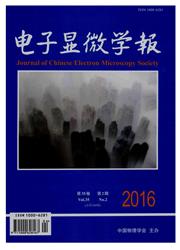

 中文摘要:
中文摘要:
本文利用透射电镜、半薄切片等技术,对银杏小孢子囊壁的发育进行了观察和研究。银杏小孢子囊壁分为表皮、内壁、中层和绒毡层。(1)对小孢子囊壁的表皮、内壁和中层细胞的观察表明,小孢子母细胞时期,这些细胞均处于活跃的代谢和合成阶段,含有大量的细胞器如线粒体、高尔基体、内质网和核糖体等;减数分裂时期细胞的细胞质浓度逐渐降低,细胞内分布有大液泡,其中表皮细胞的液泡膜上形成大量贮藏蛋白,内壁细胞的细胞壁逐渐皱缩,中层细胞纵向拉伸;有丝分裂时期,细胞的细胞质逐渐降解,内壁细胞切向壁和径向壁均出现大量乳突状纤维加厚,中层细胞解体,最后仅剩残余。(2)绒毡层细胞属于分泌型,在小孢子母细胞时期细胞内的细胞器丰富,其中质体在减数分裂过程中达到高峰;游离小孢子时期,粗糙内质网达到最大,绒毡层开始形成乌氏体,最终结合到花粉外壁,参与花粉外壁的形成;有丝分裂后期,绒毡层通过自溶的形式解体。以上结果显示,银杏的小孢子囊壁在为花粉发育提供营养和保护作用方面起着重要作用。
 英文摘要:
英文摘要:
In this investigation, the developmental processes of microsporangial wall in Ginkgo biloba L. was studied by using transmission electron microscopy and semi-thin sections ways. The microsporangial wall of G. biloba consists of epidermis, endothecium, middle layers and tapetum. (1) At the stage of microspore mother cells, the abundant organelles, including endoplasmic reticulum, mitochondria, dictyosome, golgi vesicles and ribosome, distribute in the cells of epidermis, endothecium and middle layers. During the meiotic phase, these cells changed obviously. The cytoplasmic inclusions decreased gradually while some large vacuole appeared. In the epidermal cells, large amounts of storage protein gathered on the surface of vacuole. The cell walls wrinkled in the endothecium while the middle-layer cells produced longitudinal stretching. At the mitosis stage, the organelle in the epidermis and endothecium generally decreased, the middle layers disintegrated and the endothecium exhibited fibrous thickenings. (2) The type of tapetum in G. biloba is secretory. The organelle of tapetal cells took place dramatic changes at the ultrastructural level: when microsporocyte just formed, the organelles including plastid, endoplasmic reticulum, mitochondria, dictyosome and golgi vesicles were abundant and prominent. Following meiosis, endoplasmic reticulum population rapidly increased and underwent highly active. Up to the free microspore stage, there were abundant of endoplasmic reticulum in the cytoplasm. At this time, the tapetum secreted the ubisch bodies, which were integrated into the extine. At the end of meiosis, the tapetum disintegrated. Longitudinal slit formation occurred at the early stage of meiotic division. All these results indicate that the microsporangial wall plays an important role in nutrition support and protection during the developmental processes of microspore.
 同期刊论文项目
同期刊论文项目
 同项目期刊论文
同项目期刊论文
 期刊信息
期刊信息
